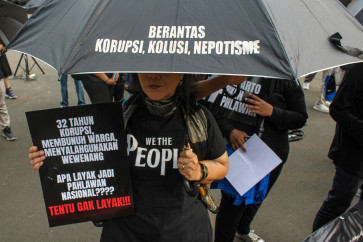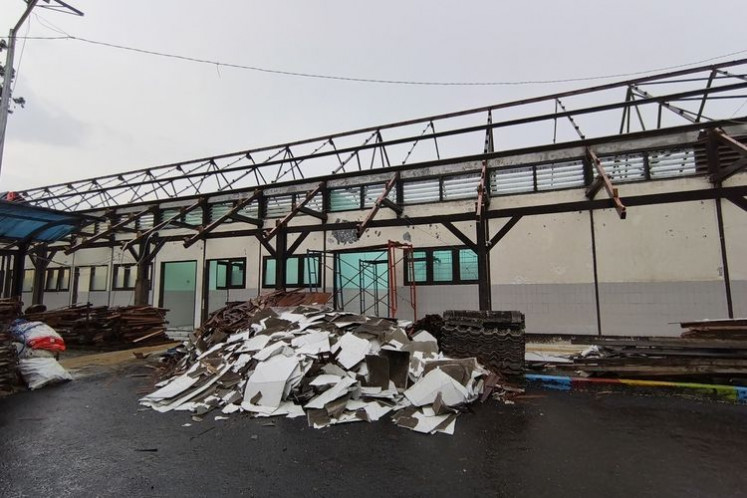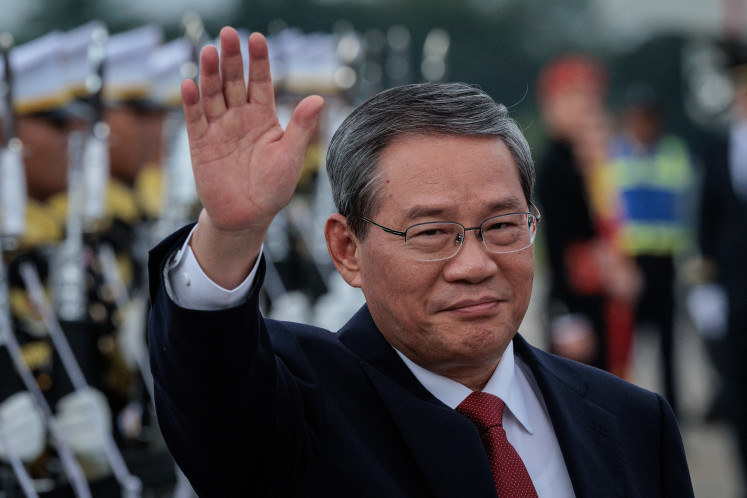Tracing the birth of communism in China
Silent study: A diorama depicting how young Chinese learned about communism is one of the sights at the Marxism Museum China in Beijing
Change text size
Gift Premium Articles
to Anyone

S
span class="caption" style="width: 558px;">Silent study: A diorama depicting how young Chinese learned about communism is one of the sights at the Marxism Museum China in Beijing. (JP/Nani Afrida)
Have you seen an original, handwritten letter from Karl Marx? Or the first edition of Marx’s Das Capital? If no, you should visit the new Marxism Museum China in Beijing.
At the museum, visitors can not only view old communist books, archives, panels, dioramas and photos of prominent figures like Karl Marx, Fiederich Engels and Vladimir Lenin, but can also learn how communist ideology penetrated China more than 100 years ago.
The Jakarta Post and several journalists from China’s neighbors had the opportunity to visit the museum at the invitation of the Communist Party of China (CPC).
“The establishment of the museum is to respect Marx. The museum contains the early works of Marx,” Yi Junqin, the director of the translation and compilation bureau, told reporters.
The museum was established in October of last year, and will officially open to the public in November, and is part of China’s effort to introduce its citizens to the history of communism in the country.
Through the pictures, photos and dioramas, visitors can learn that after the opium war of 1840, China was seeking an ideology. The names Marx, Lenin and Engels — and importantly their theories — came to China in the tide of Western learning that swept the country.
“Communism in China was from Japan, Russian and European countries. It came piece by piece to China,” Yi said.
In 1921, several Chinese intellectuals established the CPC. The party seized control of China in 1949 after defeating the nationalist party in a prolonged civil war.
Under the leadership of Mao Zedong, the CPC endured difficult periods.
“Communism spread systematically in China after the CPC was founded,” he said.
The museum exhibits their books, papers and magazines, which are all in Chinese. In fact, the communist pioneers in China were trying to translate all the theories — which mostly came in foreign languages — into their own language so everybody in China could better understand them.
These efforts in translating communist theory into Chinese was the reason China established the Central Compilation of Translation Bureau (CCTB), the organ directly under the CPC. This is why people can now readily find Marx’s books in Chinese.
Aside from presenting a communist history of China, the museum has many old and original books written by prominent communist figures like Marx, Engels and Lenin.
Then there are selected works by Chinese leaders like Mao Zedong, Deng Xiaoping and Chen Yun. They have been translated into various languages like English and Russian.
But more than that, the museum has a room — which is not open to the public — with the most precious items in the collection like postcards, paintings, first-edition books and a handwritten letter by Marx and his wife.
The letter offered words of encouragement to Marx’s friends, in English, and is signed.
‘This is the most precious collection in our museum,” Yang Jinhan, the secretary-general of the compilation and translation bureau, said, smiling.
As the museum has many rare offerings, China boasts it is the only country in the world that has such complete documents, archives and books related to communism. According to Yi Junqin, the museum has around 500,000 books on Marxism, including in foreign languages.
The Marxism Museum China, located on Xixiejie Street in Beijing, is in the same building as the translation and compilation bureau, which plays an important role in compiling, translating into Chinese and researching Marx and other communist figures.
Besides translating Marx’s works, the bureau also prepares foreign translations of important documents of the CPC and the state. The translations are in English, German, French, Spanish, Russian and Japanese.
“This is very important so foreigners will know about the CPC in China,” Yi Junqin said.









